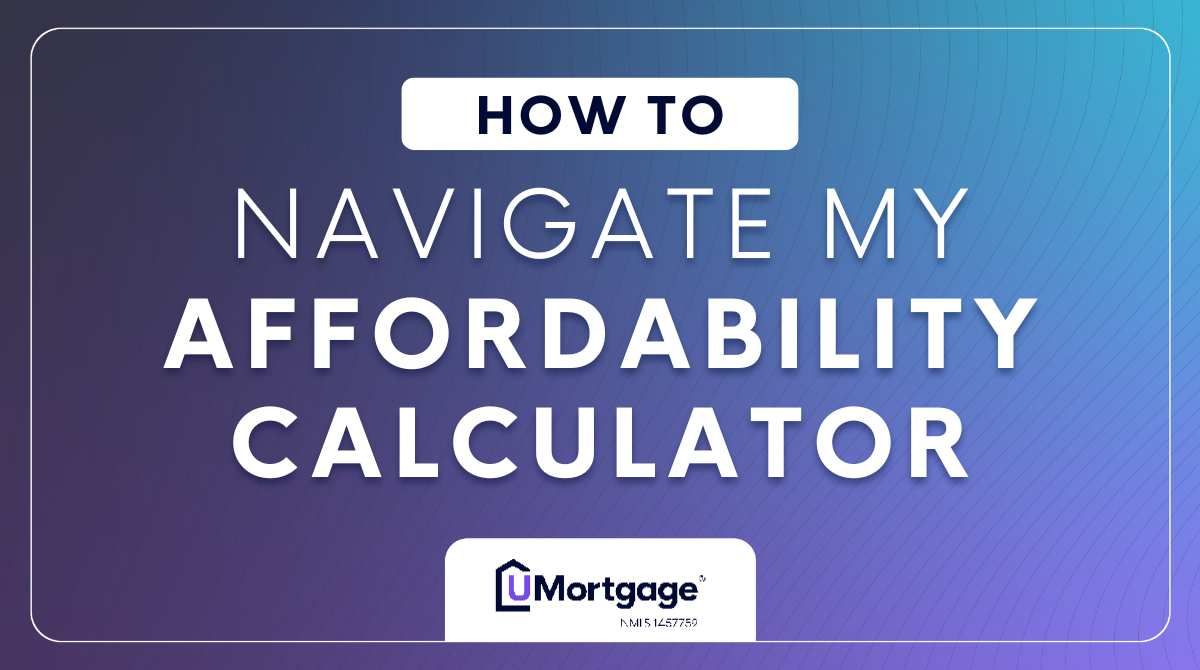How to Navigate My Mortgage Calculator
Published: October 3, 2024
Updated: October 3, 2024

How to Navigate My Mortgage Calculator
Knowing your homebuying budget should be one of your first steps before you start the homebuying process. At UMortgage, we want to make this process as simple and transparent as possible, which is why we offer our Affordability Calculator to help you estimate the maximum home price and monthly payment that fits within your budget.
Our Affordability Calculator takes key factors like your income, down payment, and monthly debts into account to give you an estimate of your homebuying budget. In the guide below, we’ll walk you through each step of the calculator to ensure you get the most accurate estimate.
It's important to note that your results are not a pre-approval. To get an accurate pre-approval, follow this link to get connected with a UMortgage Loan Originator!
Step 1: Enter Your Annual Income
The first piece of information you’ll need to input is your annual gross income. This is your total income before taxes, including your salary, bonuses, and any other sources of income such as freelance work or rental income.
Step 2: Input Your Proposed Down Payment
Next, input the amount you plan to use for your down payment. The size of your down payment directly affects how much you’ll need to borrow. A larger down payment reduces the size of your loan, which also typically lowers your monthly payment and helps you avoid paying for private mortgage insurance (PMI) if you put down 20% or more. If you’re unsure how much you can put down, you can experiment with different amounts to see how they impact your affordability estimate.
Step 3: Add Your Monthly Debts
Now, it’s time to enter your monthly debts. Monthly debts should include any existing loans paid monthly. Examples include student loans, credit card bills, car payments, or any other money paid monthly to creditors. Monthly debts should only include borrowed money and not include services like your phone bill, home utilities, Netflix subscription, groceries, or other similar costs.
Step 4: Estimate Your Interest Rate
In this step, you’ll need to input your proposed interest rate. The interest rate significantly impacts your monthly mortgage payment. If you’ve already been pre-approved for a mortgage, you can use that rate. The featured interest rate when you go to the calculator is based on today's rates and is subject to change depending on your credit score and other factors.
Step 5: Choose Your Desired Debt-to-Income Ratio
The debt-to-income ratio (DTI) is a crucial factor in determining how much house you can afford. It’s the percentage of your gross monthly income that goes toward paying debts, including your mortgage. Most lenders recommend a DTI ratio of 36% or lower, but depending on your financial situation, you may be able to go higher. If you’re unsure what DTI ratio to choose, you can stick with the default 36%, which is a common guideline, or consult with your UMortgage LO for a more tailored recommendation.
Step 6: Review Your Results
Once you’ve filled out all the fields, UMortgage’s Affordability Calculator will do the rest! The calculator will estimate:
- The maximum home price you can afford based on the information you provided.
- Your estimated monthly mortgage payment, which includes principal and interest.
These estimates will give you a clearer picture of what fits within your budget and help you start shopping for homes with confidence.
Using UMortgage’s Affordability Calculator is an excellent way to get an initial sense of what home prices are within reach based on your financial situation. Remember, this tool is designed to give you an estimate—your final loan amount and mortgage terms will depend on other factors, such as your credit score, loan program, and lender-specific requirements.
If you’re ready to take the next step or want a more accurate mortgage quote, we’re here to help! Fill out this form today to get connected with a UMortgage Loan Originator near you to discuss your options, get pre-approved, and get answers to any questions you may have about the homebuying process.
